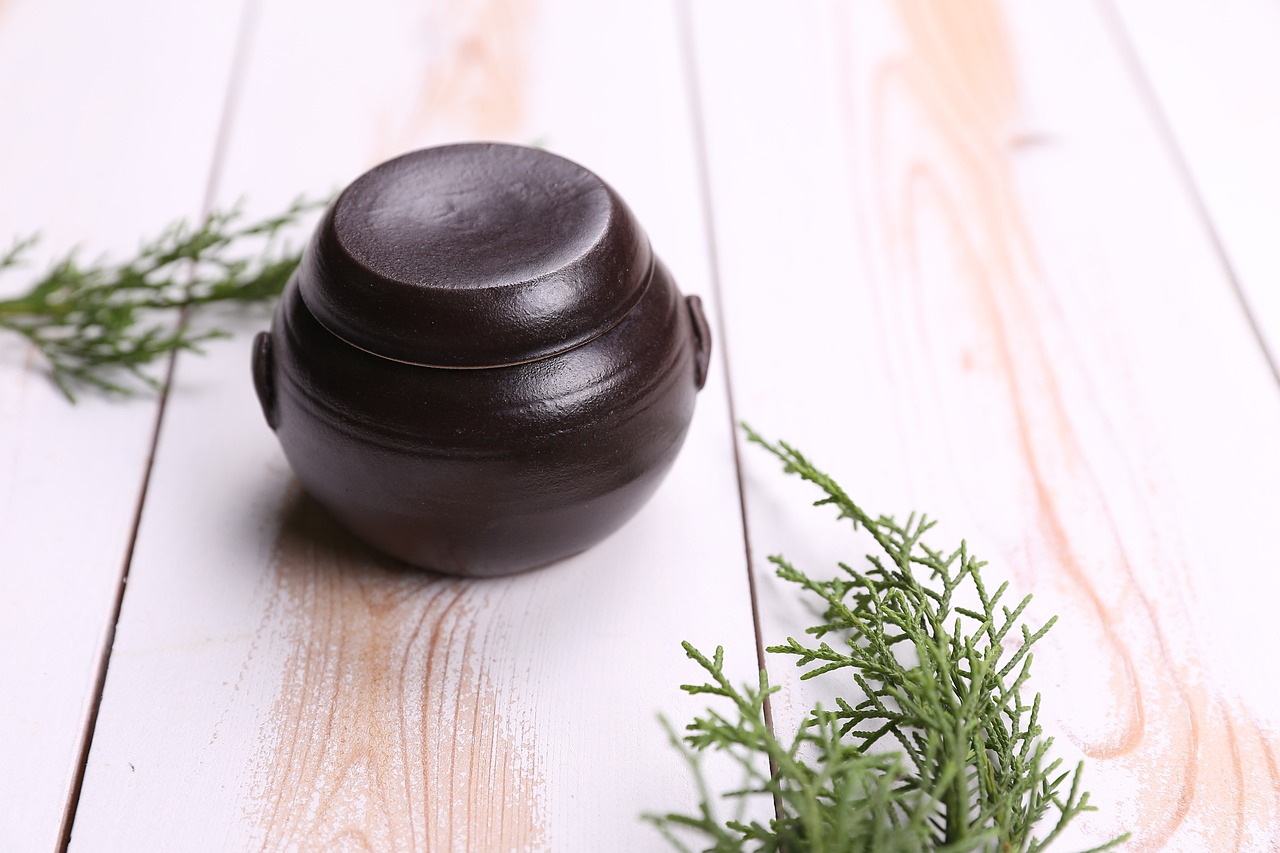How to Make Your Own Homemade Pesto Sauce
Making your own homemade pesto sauce is a delightful culinary adventure that brings together the vibrant flavors of fresh basil, the richness of Parmesan cheese, and the nuttiness of pine nuts. This versatile sauce can elevate a simple pasta dish, add a burst of flavor to sandwiches, or even be used as a marinade for meats. Let's dive into the step-by-step process of creating this delectable pesto sauce that will surely impress your taste buds and those of your guests.

Gathering Ingredients
When it comes to making your own homemade pesto sauce, the first step is gathering all the necessary ingredients. The key components for a flavorful pesto include fresh basil leaves, garlic cloves, pine nuts, Parmesan cheese, olive oil, and salt. Each ingredient plays a crucial role in creating the perfect balance of flavors that will make your pesto sauce truly exceptional.
Starting with fresh basil leaves is essential as they are the heart of the sauce, providing that vibrant green color and aromatic flavor. Selecting high-quality basil and ensuring it is fresh will elevate the taste of your pesto. Next, garlic cloves add a pungent kick to the sauce, enhancing its overall depth of flavor. It's important to use fresh garlic for the best results.
Pine nuts are another key ingredient that brings a rich and nutty taste to the pesto sauce. Toasting the pine nuts lightly before blending them will intensify their flavor and add a delightful crunch to the sauce. Parmesan cheese contributes a salty and savory element, while olive oil binds all the ingredients together, creating a smooth and luscious texture.
Lastly, a pinch of salt enhances the flavors of the other ingredients, balancing the taste of the pesto sauce. Gathering these ingredients and preparing them with care will set the foundation for a delicious homemade pesto that will surpass any store-bought version.

Blending the Flavors
When it comes to creating a truly flavorful homemade pesto sauce, the process of blending the ingredients is where the magic truly happens. This step allows all the individual flavors of fresh basil, garlic, pine nuts, Parmesan cheese, olive oil, and salt to come together harmoniously, creating a symphony of taste in every spoonful.
Imagine the vibrant green basil leaves dancing with the rich nuttiness of pine nuts, while the sharpness of garlic and the salty tang of Parmesan cheese add depth and complexity to the mix. The olive oil acts as the conductor, bringing all these flavors together in perfect harmony, ensuring each ingredient is heard and appreciated in every bite.
Using a food processor or a mortar and pestle, you have the power to control the final texture and consistency of your pesto sauce. Do you prefer a smooth and creamy sauce that coats pasta effortlessly, or do you enjoy a chunkier version with visible bits of basil and nuts for added texture? The blending process allows you to tailor your pesto sauce to your personal taste preferences, making each batch a unique culinary creation.
As you blend the flavors together, take a moment to appreciate the transformation happening before your eyes. The vibrant green color of the basil leaves infuses the sauce with freshness, while the aroma of garlic and Parmesan cheese fills the air, promising a delicious dining experience ahead. Each pulse of the food processor or each gentle crush of the mortar and pestle brings you closer to a homemade pesto sauce that is bursting with flavor and personality.

Choosing the Right Basil
When it comes to creating the perfect homemade pesto sauce, selecting the right basil is crucial in achieving that authentic and vibrant flavor. With various types of basil available, each offering its unique aroma and taste, it's essential to choose the one that complements your dish the best.
One of the most common varieties used in traditional pesto recipes is Genovese basil, known for its sweet and slightly spicy flavor profile. This type of basil pairs wonderfully with the sharpness of garlic, the nuttiness of pine nuts, and the richness of Parmesan cheese, creating a harmonious blend of flavors in your pesto sauce.
If you're looking to add a twist to your pesto sauce, consider experimenting with different basil varieties such as Thai basil, lemon basil, or purple basil. Each type brings its unique characteristics to the sauce, adding depth and complexity to the overall taste.
When selecting basil for your homemade pesto, opt for fresh, vibrant leaves that are free from any blemishes or wilting. The fresher the basil, the more intense and aromatic your pesto sauce will be. Additionally, consider growing your own basil plant to have a readily available supply of fresh herbs whenever you need them.
Remember, the key to choosing the right basil for your homemade pesto sauce lies in your personal preference and the flavor profile you wish to achieve. Whether you stick with the classic Genovese basil or venture into new basil varieties, each choice will bring its unique flair to your culinary creation.

Roasting Pine Nuts
Roasting pine nuts can elevate the flavor of your homemade pesto sauce to a whole new level. The process of roasting pine nuts involves gently toasting them in a dry skillet or oven until they turn golden brown and release their nutty aroma. This simple step adds a depth of flavor and crunchiness to your pesto sauce, making it even more delicious and aromatic.

Adjusting Consistency
Adjusting the consistency of your homemade pesto sauce is a crucial step in achieving the perfect balance of flavors and texture. The key to achieving the desired consistency lies in controlling the amount of olive oil added during the blending process. If you prefer a thicker pesto sauce, start by adding a smaller amount of olive oil and gradually increase it until you reach the desired thickness.
On the other hand, if you prefer a thinner consistency, you can adjust by adding more olive oil while blending the ingredients. This allows you to customize your pesto sauce to suit your personal preferences, whether you like it thick and spreadable or thin and drizzled over dishes.
Experimenting with the consistency of your pesto sauce can be a fun and creative process. You can also adjust the consistency by adding more Parmesan cheese for a thicker texture or incorporating a bit of water to thin it out. The flexibility in adjusting the consistency ensures that you can tailor your pesto sauce to complement a variety of dishes.
Remember, the key is to taste and adjust as you go along. Don't be afraid to play around with the ingredients and proportions until you achieve the perfect consistency that suits your taste buds. Whether you're a fan of a creamy pesto sauce or a more liquid one, the choice is yours to make!

Experimenting with Texture
When it comes to experimenting with texture in your homemade pesto sauce, the possibilities are endless. The texture of your pesto can greatly impact the overall experience of your dish, so it's essential to find what works best for your taste buds. Whether you prefer a silky smooth pesto or a more rustic and chunky texture, there are a few techniques you can try to achieve your desired consistency.
One method to experiment with texture is by adjusting the amount of olive oil used in your pesto sauce. Adding more olive oil will result in a smoother and creamier texture, perfect for coating pasta or spreading on sandwiches. On the other hand, using less olive oil will create a thicker and chunkier pesto, ideal for adding a burst of flavor and texture to grilled meats or roasted vegetables.
Another way to play with texture is by varying the blending time and method. For a traditional smooth pesto, blend the ingredients in a food processor until everything is well combined. If you prefer a chunkier texture, pulse the ingredients a few times to leave some larger pieces of basil and nuts for added texture and visual appeal.
Additionally, you can experiment with the ingredients themselves to alter the texture of your pesto sauce. For a creamier consistency, consider adding a touch of heavy cream or Greek yogurt to the mixture. Alternatively, incorporating a handful of spinach leaves along with the basil can introduce a silkier texture while boosting the nutritional value of your pesto.
Remember, the beauty of making your own homemade pesto sauce lies in the ability to customize it to your liking. Don't be afraid to get creative and try different techniques to achieve the perfect texture that will elevate your dishes to a whole new level of deliciousness.

Storing and Serving
When it comes to storing and serving your homemade pesto sauce, it's essential to follow a few key guidelines to ensure its freshness and flavor are preserved for as long as possible. Proper storage techniques can make a significant difference in how long your pesto sauce will last and how well it will maintain its vibrant taste.
One of the best ways to store homemade pesto sauce is by transferring it to an airtight container. This will help prevent air exposure, which can cause the sauce to oxidize and lose its bright green color. Additionally, storing the pesto sauce in the refrigerator can help prolong its shelf life, keeping it fresh for up to a week.
If you find yourself with an abundance of pesto sauce or simply want to save some for later use, freezing is a great option. To freeze your homemade pesto sauce, consider portioning it into ice cube trays or small containers for convenient serving sizes. Once frozen, transfer the pesto cubes or portions to a freezer-safe bag or container for long-term storage.
When it comes to serving your homemade pesto sauce, the possibilities are endless. From tossing it with freshly cooked pasta to using it as a flavorful marinade for grilled meats, pesto sauce adds a burst of fresh flavor to any dish. Get creative with how you incorporate pesto into your meals, whether as a dip for crusty bread or a topping for roasted vegetables.
Remember, the key to serving pesto sauce is to let its vibrant flavors shine. Avoid subjecting the sauce to high heat, as this can diminish the freshness of the ingredients. Instead, consider adding pesto sauce to dishes right before serving to preserve its aromatic qualities and vibrant green color.
By following these tips for storing and serving your homemade pesto sauce, you can enjoy its fresh flavors and versatility in a variety of dishes. Whether you choose to freeze it for later use or incorporate it into your meals right away, homemade pesto sauce is sure to elevate your culinary creations with its burst of herbal goodness.

Freezing for Later Use
When it comes to preserving the fresh flavors of homemade pesto sauce for later use, freezing is a fantastic option. By following a few simple steps, you can enjoy the vibrant taste of your pesto sauce even months after making it. To freeze your pesto sauce effectively, start by preparing small portions that are easy to defrost and use without any waste. Consider using ice cube trays to freeze individual servings of pesto, making it convenient to take out only what you need for a meal.
Before freezing, ensure that your pesto sauce is at the desired consistency, as freezing can slightly alter the texture. Once you have portioned out the pesto into the ice cube trays, cover them with plastic wrap or aluminum foil to protect the sauce from absorbing other flavors in the freezer. Allow the pesto cubes to freeze completely before transferring them to a resealable freezer bag for long-term storage.
Label the freezer bag with the date of preparation to keep track of freshness and use within three to four months for the best flavor. When you're ready to use the frozen pesto, simply remove the desired number of cubes and let them thaw in the refrigerator or at room temperature. You can also add frozen pesto cubes directly to warm pasta or soups for a burst of fresh flavor without the need for thawing.
Frequently Asked Questions
- Can I substitute any ingredients in the homemade pesto sauce recipe?
Yes, you can customize your pesto sauce by substituting ingredients based on your preferences. For example, you can use different nuts like walnuts or almonds instead of pine nuts, or swap basil with other herbs like parsley or arugula for a unique flavor.
- How long can I store homemade pesto sauce?
Homemade pesto sauce can be stored in an airtight container in the refrigerator for up to one week. To extend its shelf life, you can also freeze pesto in ice cube trays for easy portioning and use it within 3 to 4 months.
- Is homemade pesto sauce suitable for vegans?
Traditional pesto sauce contains Parmesan cheese, which is not vegan. However, you can easily make a vegan version by omitting the cheese or using a plant-based alternative. Nutritional yeast can also be added to mimic the cheesy flavor without dairy.
- Can I use a blender instead of a food processor to make pesto?
While a food processor is ideal for making pesto due to its ability to finely chop ingredients without pureeing them, you can use a blender as an alternative. Just be cautious not to overblend the mixture, as it may result in a smoother consistency than desired.
- What dishes can I use homemade pesto sauce in?
Homemade pesto sauce is a versatile condiment that can be used in various dishes. It can be added to pasta, sandwiches, salads, pizzas, or used as a marinade for meats and vegetables. The possibilities are endless, so feel free to experiment and get creative with your pesto creations!



















